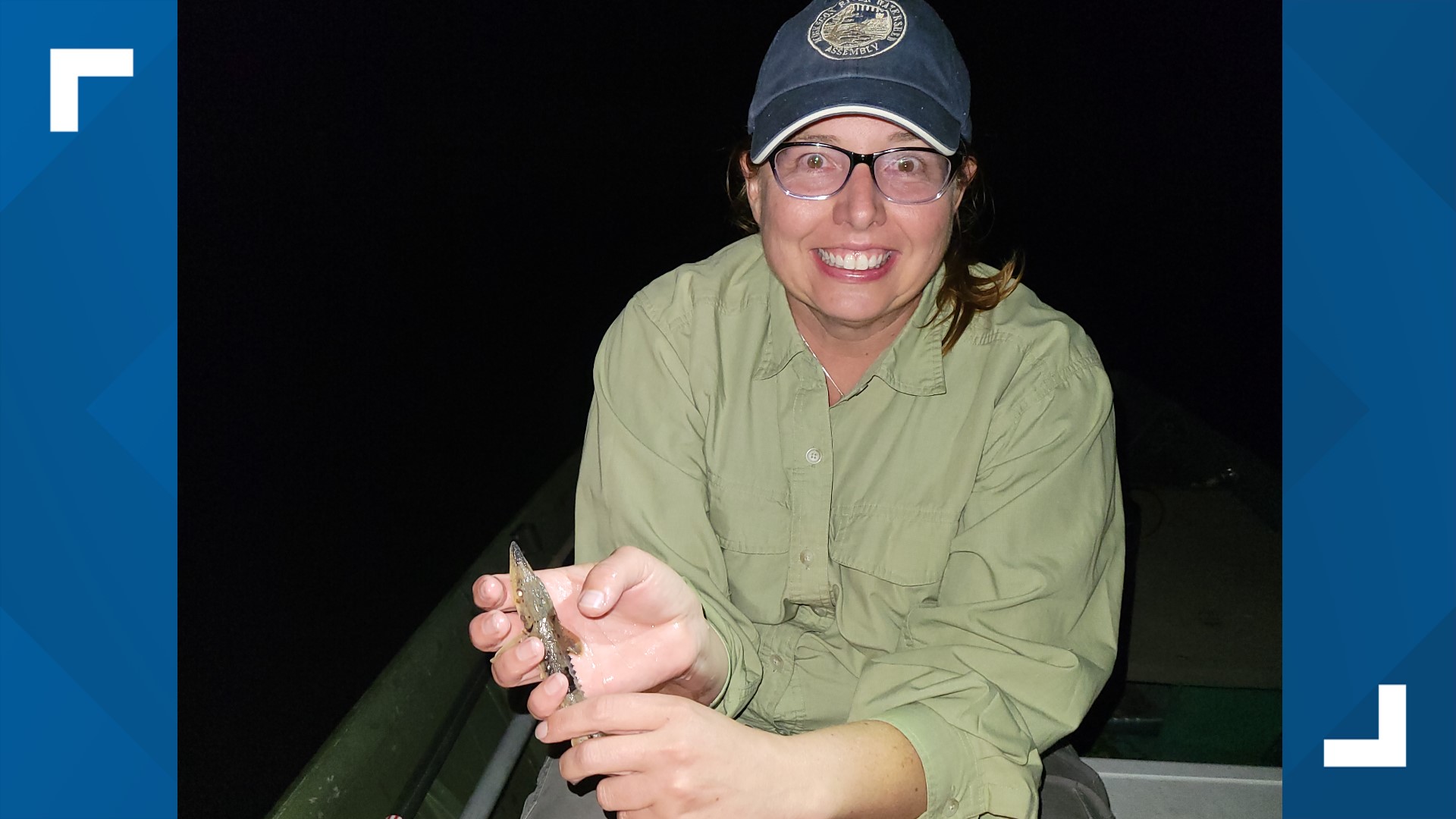GRAND RAPIDS, Mich — Researchers from the Grand Rapids Public Museum (GRPM) and partner organizations announced a "major breakthrough" in their Grand River sturgeon reproduction research.
On Tuesday, researchers said that they captured and released a juvenile Lake Sturgeon from the Grand River — indicating successful natural reproduction of the fish for the first time in that habitat.
“Documentation of a juvenile Lake Sturgeon here in the Grand River is a major breakthrough in our research,” said Dr. Stephanie Ogren, the GRPM’s VP of Science and Education. “It’s a rewarding experience to collaborate and share this experience with local partners while working on research projects that will help us better understand the dynamics of the Grand River. The Grand River is such an important resource and focal point within Grand Rapids, and it’s our goal to conserve and share it’s impact with the community.”
This research project, which has been ongoing for the last four years, is led by GRPM in partnership with Encompass Socio-Ecological Consulting, John Ball Zoo and Grand Valley State University.
The sturgeon that was captured and released was about six inches long and estimated to be about four months old.
“Unlike the other sturgeon populations in the Lake Michigan Basin, we know very little about the Grand River population,” said Dr. Marty Holtgren of Encompass Socio-Economical Consulting. “This dedicated partnership, along with finding a young sturgeon, represents an initial step in our learning of what needs to be done to protect and enhance this species for generations to come.”
Lake Sturgeon populations had been dwindling throughout the Great Lakes, inland lakes and rivers for decades and in the late 1990s there began a concerted effort to grow those populations.
This partnership is focused on finding and documenting successful reproduction and recruitment into the Grand River population.
On Thursday, a team of conservationists went out on the Grand River to look for more fish. Lake sturgeon are classified as a threatened species in Michigan.
"It's important for us, other biologists, the people of Michigan, and state agencies, like Michigan Department of Natural Resources, do what they can to preserve those speed those populations," said Bill Flanagan, conservation manager at John Ball Zoo.
They hope to catch more juvenile lake sturgeon this year to continue documentation of the population in the Grand River.
The conditions have to be perfect for crews to go out looking, with calm weather and clear water.
►Make it easy to keep up to date with more stories like this. Download the 13 ON YOUR SIDE app now.
Have a news tip? Email news@13onyourside.com, visit our Facebook page or Twitter. Subscribe to our YouTube channel.

